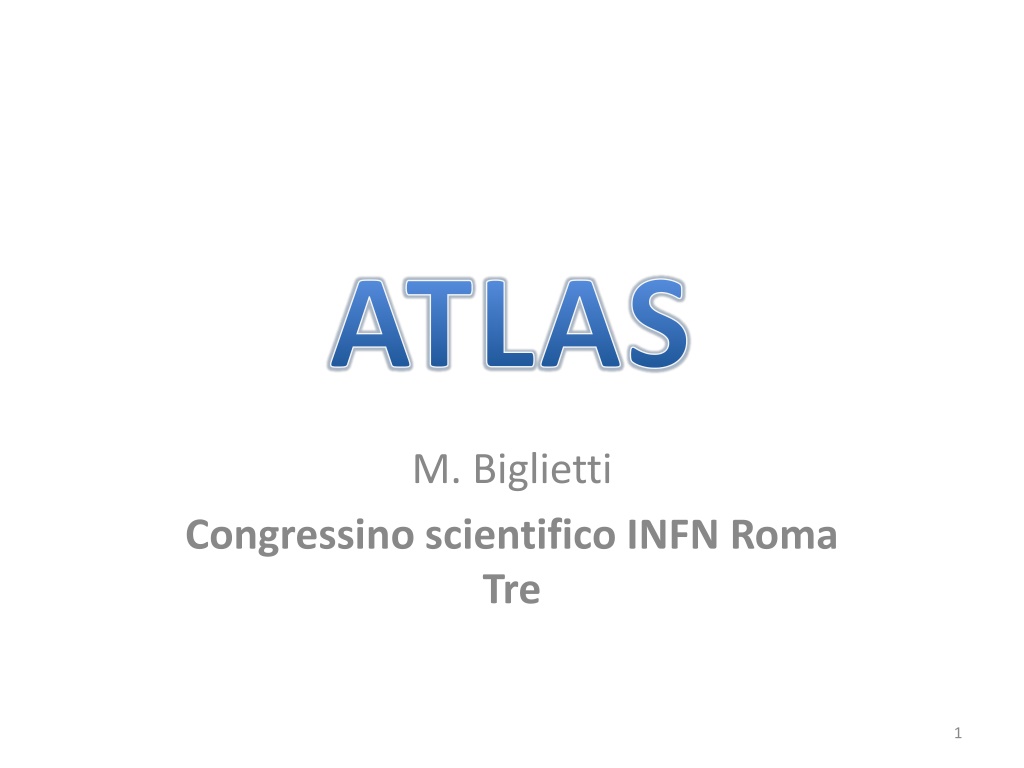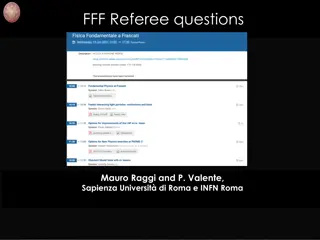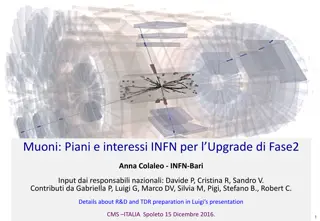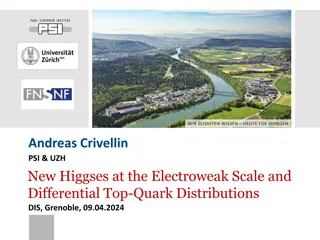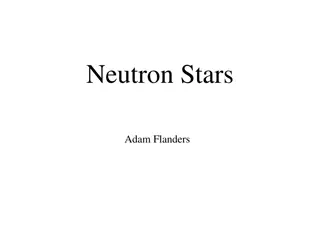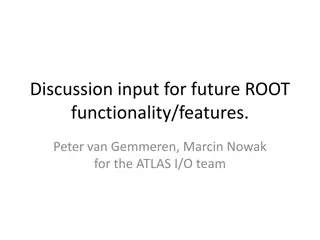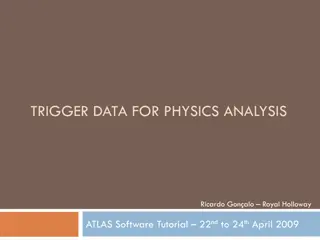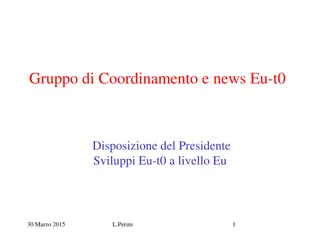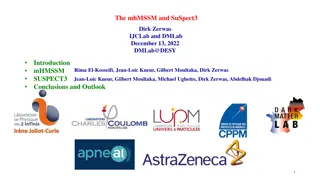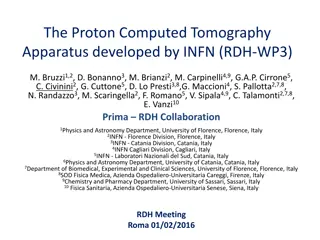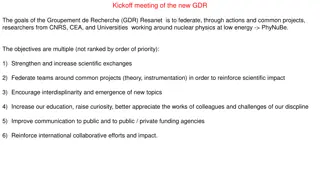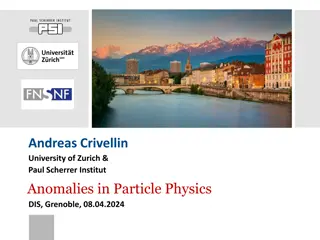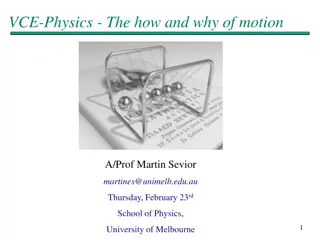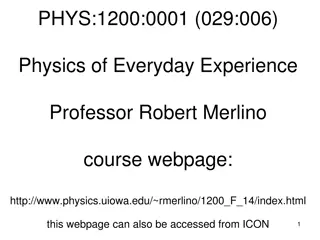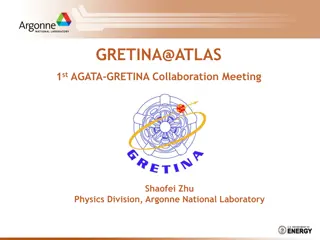ATLAS Physics Research Updates and Discoveries at INFN Roma Tre
Explore the latest advancements in ATLAS physics research conducted at INFN Roma Tre, including insights into Higgs boson production, multilepton final states in ttH searches, Run1 paper results, and expectations for VH(WW) in Run2. Discover the innovative techniques used for signal/background discrimination and the dedication to improving significance in future runs through enhanced analysis methods.
Download Presentation

Please find below an Image/Link to download the presentation.
The content on the website is provided AS IS for your information and personal use only. It may not be sold, licensed, or shared on other websites without obtaining consent from the author. Download presentation by click this link. If you encounter any issues during the download, it is possible that the publisher has removed the file from their server.
E N D
Presentation Transcript
ATLAS M. Biglietti Congressino scientifico INFN Roma Tre 1
Introduction VH : Associated production of an Higgs boson with W/Z vector boson ttH : Associated Production of a Higgs Boson and ttbar pairs HH : Production of Higgs boson pairs 2
VH(HWW) Roma3: A. Farilla (convener), M. Biglietti (MVA analysis), B. Di Micco (Theory syst.) Run1 Paper published in summer 2015: JHEP 08 (2015) 137 ( s=7 TeV and 8 TeV corresponding to int. luminosities of 4.5/fb and 20.3/fb) Editors: M.Biglietti, B. Di Micco, A.Farilla, D.Orestano, T. Kubota To best profit from the different background composition, the events are divided into different categories: Much lower Xsection wrt ggF: [pb] 19.27 ggF 1.578 VBF 0.705 WH 0.415 ZH 4-lep, 3-lep categories: only leptonic decays of W,Z (lepton= electron or muon) 2-lep categories: also hadronic decays of W,Z SFOS = Same Flavour Opposite Sign DFOS= Different Flavour Opposite Sign SS= Same Sign 3
Run1 Paper results Final results are obtained from a profile likelihood fit to the data (14 signal categories in total). A combination of VH with the H WW ggF and VBF categories is also performed:
What do we expect for VH(WW) for Run2? exp 0.73 Scaling the Run1 result for the increase of the Xsections we get the following VH expected significance for Run2 (was 0.93 for Run1) fb-1 10 20 1.03 100 2.31 170 3.00 This is a conservative estimation , we plan to improve the S/B ratio in Run2 by a dedicated MVA analysis for the 3-lepton signal regions with a high contamination from WZ and top quark production . 5 5
ATLAS Roma Tre group involved in the ttH search (ATLAS Run-2, 13 TeV) People involved: T. Baroncelli, G. Salamanna, M. Sessa, V. Vecchio ttH in multilepton final state, 3 lepton channel ICHEP2016 CONF NOTES ttH multilepton ATLAS-CONF-2016-058 https://cds.cern.ch/record/2206153 ttH Comb. ATLAS-CONF-2016-068 https://cds.cern.ch/record/2206211 From ttH combination observed (expected) significance: 2.8 (1.8 ) Major contribution: estimation of background events from secondary or fake leptons. This background is estimated directly from data, exploiiting a region enriched in this kind of background. 6
Study for the suppression of the non-resonant tt+ll background Background very hard to be removed: experimental signature very similar to the signal one. Signal/background discrimination based on the kinematic event reconstruction, exploiting the different number of prompt neutrinos. Two different approaches: building a new MissingET (in-situ) variable and identification of a discriminating variable (related to W and Top masses) to be used in MVA techniques (Valentina's master thesis). full kinematic reconstruction of tt+ll events, exploiting the tool KLFitter (Kinematic Likelihood Fitter) and identification of a discriminating variable between signal and background (Marco's PhD thesis). Different studies (based on event kinematic and detector reconstruction) have been performed to infer the maximum possible discrimination. Although, theoretically, a separation seems to be possible, the detector performances, especially on the jet energy resolution, limit the discriminating power of our variables. 7
8 8
9 9
